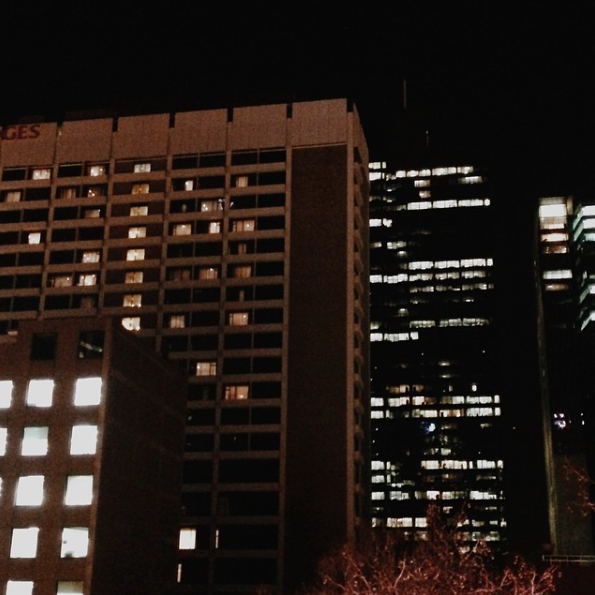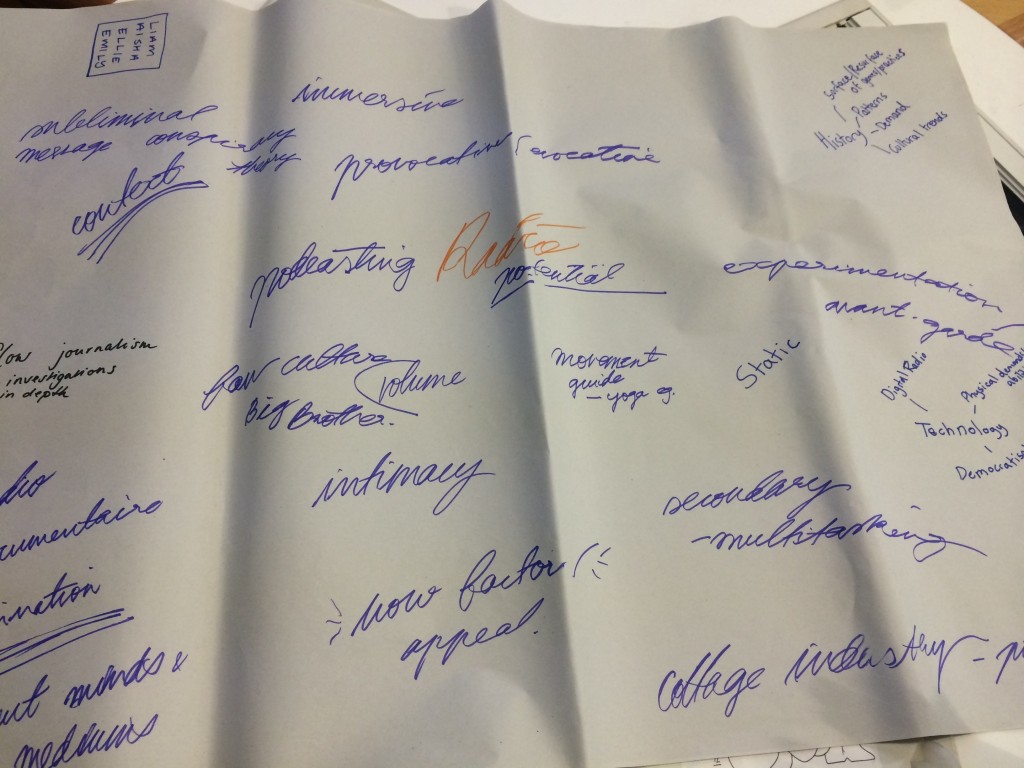http://federate-radio.weebly.com
Every Great City
Studio
What makes Federation Square tick? Why do people go there instead of somewhere else? I don’t know if these are questions you can answer in three and a half minutes but it’s all about the journey (of discovery), man.
Featuring Satie’s Fantaisie-valse

I really struggled to think of new ideas for A3. Ultimately, I’m much happier with the route I took for Every Great City than Bored, Stressed, Stuck in a Rut (which I’ll discuss in that reflection). After my feedback from A2 I realised that I needed to find a focus rather than “misc Fed Square”. What could I do and how could a structure it in a way that was varied and compelling to listen to?
I was worried about getting enough to texture in – and, as these things usually go, I ended up with more and better texture than my field piece. I was inspired by American-style informative, explorative podcasts like 99% Invisible, which hop between producer narration and different vocal and recording textures. I’m aware that my piece is a very rough approximation of this, but it prompted me to think about the different ways information can be gathered and displayed – a phone call rather than a straight interview, the different tone my voice took on when I was reading from the internet. I’m proud of this piece, as amateurish as it is, because I see it as another step forward in my learning.
After some thought, I decided that the easiest way to create an examination was to ask a question. That came easily enough to me; since Fed Square is a hub for people to congregate, I would ask why. However, what was originally intended to be a serious piece was pushed into (arguably lame) comedy when my sources failed to come through – specifically the real psychology major, who was unwilling to have her voice recorded. The brusque phone call was actually recorded with an “actor”. It was inconvenient but very good experience to see how a failed idea could spark a new one and turn the piece in an entirely different direction.
I also worked harder to include a sense of structure in my piece based around the idea of acts. First, the so-called study, and then the casual interview with my grandma, finally leading into my reflection and sleep-addled realisation. Listening back, I’m surprised by the gulf between vocal textures; as I was recording, I imagined that my voice was essentially the same all the time. The differences between semi-scripted narration, reflection, middle of the night rambling, on the phone and reading other people’s comments was a pleasant surprise and has given me lots of ideas for future textural diversity.
Overall, I think this piece demonstrates a rate of learning that I’m satisfied with. It’s not especially polished or professional but I think it shows crude development of structure and texture. Moving forward, at least.
Bored, Stressed, Stuck in a Rut
Field
Federation Square is full of people killing time and (sometimes) brain cells. What do they do when they’re feeling chronically bored and confused? Your producer explores her own frustration and lack of inspiration through the ideas and opinions of passers by.

I think the limitations present in a location like Fed Square paired with my own level of skill come across without subtlety in this piece – not just literally, as I frame it around my own frustration (a concept I regret because I think it’s been done to death and isn’t funny or interesting – obviously it was born out of desperation). Listening to it, the editing is choppy and uninspired and my monologues sound tired in every sense of that word. I’m glad at least that I pushed myself beyond the mistake from A2’s Just different – rather than creating a monotonous rhythm of one vox pop snippet after another I managed a slightly less, but still very monotonous rhythm of vox pops interjected with my own thoughts, along with the (very minimally) different texture in the final reflection on the nature of the space.
When it came to editing, I felt very limited by the material I’d gathered. I went in feeling very vague and, even though I tried to flip that on its head, what I did gather was often repetitious or too convoluted to use. In hindsight, a moment to rephrase the questions I was asking and a few more interviews with these new questions could have provided more material to use. More conscious thought about texture would have also helped, although I did make a few attempts to gather different sounds. I have also learnt that “keep doing what you’re doing, just act like I’m not here” works about as well for audio recording as it does photography and videography; that is, not at all.
It’s a small thing, but I’m pleased with the way I managed to tie themes of stress and boredom (which are obviously free of location) to Fed Square itself. I think this is a piece that’s relevant to the space its in.
In this case, there isn’t a particular work or reading that I took inspiration from. I spent a lot of time listening with care to those in the Drive as well as my usuals and, aside from creating a piece of fiction I didn’t feel equipped to execute, there was nothing that sparked something for me. In honesty, the work that had the biggest effect on this piece is Just different, which I mentioned above. The paralysing effect of only having an idea of what not to do as opposed to what I could do comes through loud and clear.
In future, I’ll plan ahead and look at any future work I may need to do in order to pace my ideas. Racing into A2 meant that, by the end of A3, I was drained of inspiration. I think I could also benefit from having a stronger idea and rough plan of what I want to end up with, which is something I’ll experiment with for A4. While I’ll revisit it and remain flexible based on the raw material I gather, I think it could be helpful in guiding my questioning, field narration and collection of ambient sound.







